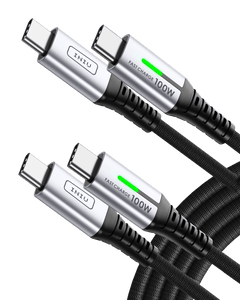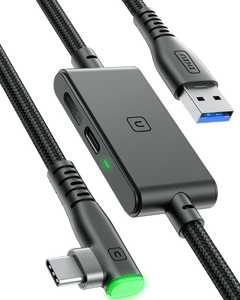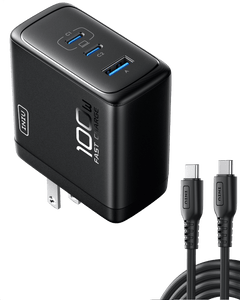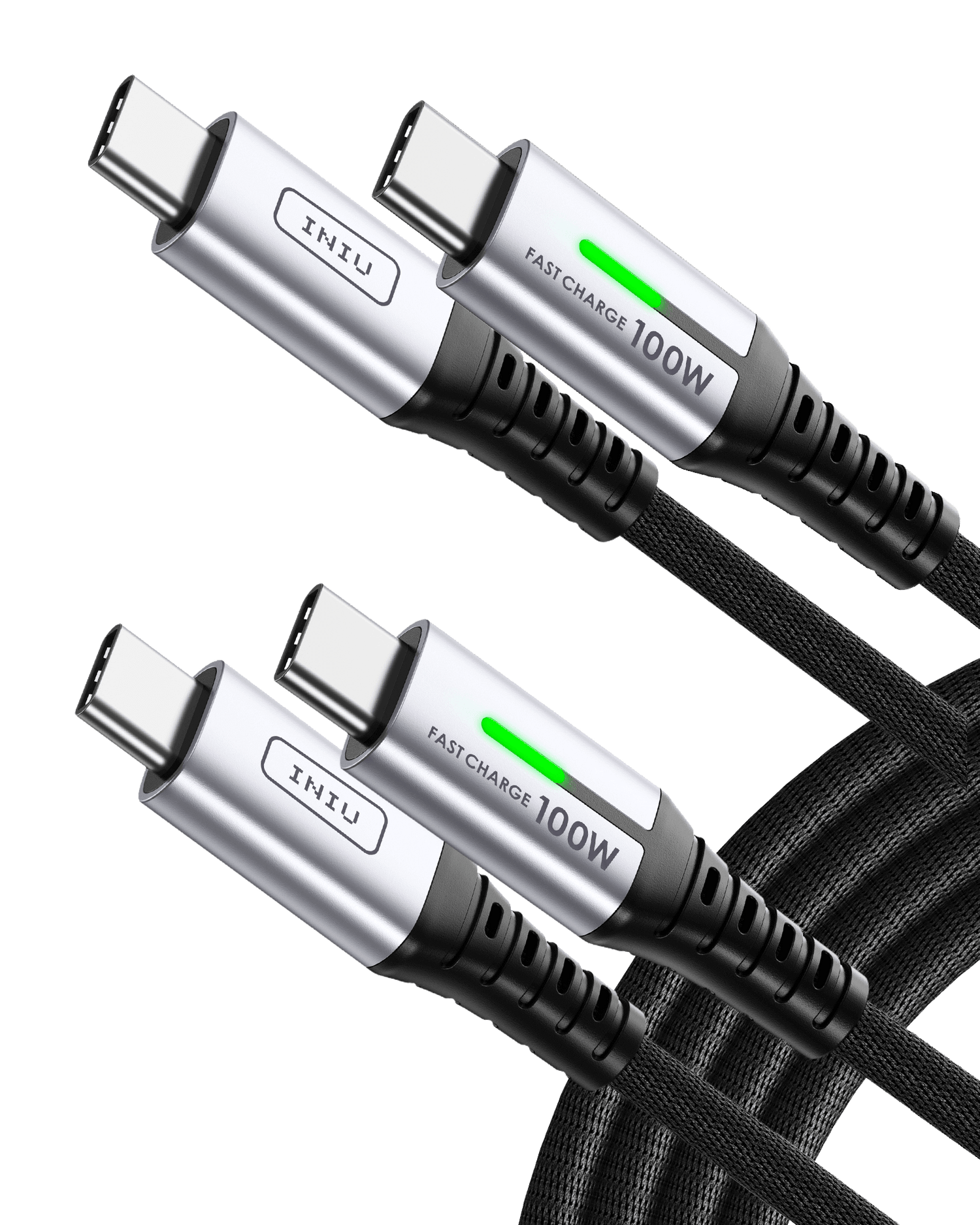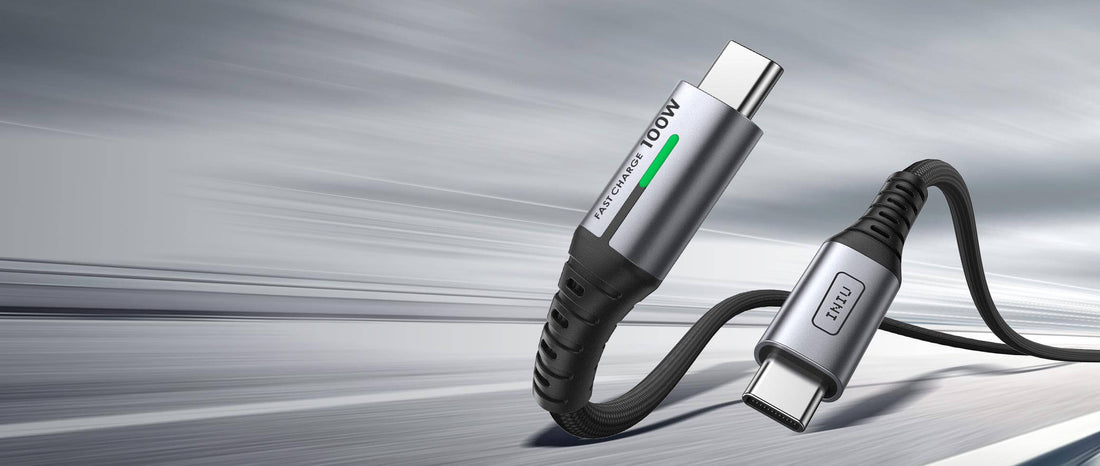
The Ultimate Guide to Charging Cables: Types, Functions, and Common Problems
Open that drawer. You know the one. It's a tangled nest of wires, a graveyard of chargers past and present. Some cables have familiar ends, others are a mystery. Some charge your phone at lightning speed, while others trickle power so slowly you wonder if they're working at all. This universal frustration is why you're here. You're tired of the confusion, the cost of replacing broken cables, and the simple question: "Which cable do I actually need?"
This guide will demystify the world of charging cables once and for all. By the end of this article, you'll be able to confidently identify any cable, understand its true capabilities, troubleshoot why your cables fail, and know exactly which one to buy for your specific needs.
More Than Just Power - Understanding Cable Functions

The first major point of confusion for most people is the realization that two cables that look identical can behave in completely different ways. One might connect your phone to your car for Android Auto or Apple CarPlay, while another, identical-looking cable will only provide power. This isn't a defect; it's by design.
Not All Cables Are Created Equal: Charge, Data, or Both?
Inside a standard USB cable are several small wires. In the simplest terms, some wires carry power, and others carry data. The cable's function depends on which of these wires are actually connected.
Charge-Only Cables
What they are: These are the most basic type of cable. Inside, only the power-carrying wires are connected from end to end. The data transfer wires are either physically absent or intentionally disconnected.
Why they exist: There are two main reasons. The first is cost. For manufacturers of cheap electronic gadgets (like a small desk fan or a novelty light), omitting the data wires is a way to save a few cents per unit. The second, more important reason is security. When you use a public USB port at an airport, café, or hotel, you risk a type of cyberattack called "juice jacking," where a compromised port can steal data from your device. A charge-only cable acts as a "data blocker," ensuring that only power can flow, protecting your personal information.
How to identify them: They often feel flimsier or thinner than other cables. The definitive test is to plug your phone into a laptop or computer. If your phone begins to charge but you get no notification on your phone or computer about a "USB connection," "File Transfer," or "Trust This Computer," you have a charge-only cable.
Charge & Sync (Data Transfer) Cables
What they are: This is the standard, fully functional cable that most people expect. It has all the internal wires connected, allowing it to both deliver power for charging and create a two-way data connection for syncing files, photos, and videos.
The nuance of speed: Even among data cables, performance varies dramatically. This is where you see terms like USB 2.0 or USB 3.2.
USB 2.0: This is the incredibly common standard. It offers data transfer speeds of up to 480 Mbps (megabits per second). It's perfectly fine for charging and transferring a few photos, but it will feel slow if you're trying to move large video files.
Thunderbolt: These are the high-speed standards. They offer speeds starting from 5 Gbps (gigabits per second) and go up from there. These are essential for professionals moving large files, connecting external monitors, or using high-performance peripherals. You can sometimes identify a USB 3.0 Type-A connector by a blue plastic insert inside the plug.
The Quick Test: How to Tell What You Have
- Plug your smartphone or tablet into a trusted computer (your personal laptop, for example).
- Look at your device's screen. Does a notification pop up asking you to choose a connection type (e.g., "File Transfer," "Photo Transfer," "Charge Only")?
If yes, you have a fully functional Charge & Sync cable. If no (and it only charges), you have a Charge-Only cable.
A Field Guide to Connectors
The physical shape of the plug at each end of the cable is the most obvious differentiator. Getting this right is the first step to buying the correct cable.

Know Your Connectors: The A, B, C of USB
USB-A: The Classic Rectangle
This is the connector everyone knows. The flat, rectangular plug has been the dominant standard for decades. You'll find these ports on computers, wall chargers, power banks, and in cars. Its biggest downside is that it's not reversible—you have a 50/50 chance of plugging it in the wrong way every single time. While still common, it is slowly being replaced by the more versatile USB-C.
Micro-USB: The Old Android Standard
This small, trapezoidal connector was the standard for nearly all non-Apple devices for years. You'll still find it on older Android phones, Bluetooth speakers, headphones, cameras, and countless electronic accessories. It's also not reversible and is known for being somewhat fragile. It is now considered a legacy port.
USB-C: The Modern, All-in-One
This is the future, and increasingly, the present. The USB-C connector is a small, symmetrical oval that is completely reversible—you can't plug it in the wrong way. But its real power lies in its versatility:
Universal: It's used on modern Android phones, iPhones (15 and newer), iPads, MacBooks, Windows laptops, the Nintendo Switch, and more.
Power Delivery (PD): A cable usb c fast charge can carry vastly more power than older standards. This technology, called Power Delivery, allows a single cable to charge a tiny earbud or a power-hungry 16-inch laptop. This is why you see chargers that can output 65W, 100W, or even more.
High-Speed Data: USB-C is the physical connector for the fastest data standards, including USB 4 and Thunderbolt 4, making it essential for creative professionals.
A cable with USB-C on both ends, often called a usb c to c cable, is the new gold standard, enabling the fastest charging and data transfer speeds between modern devices. But for connecting new devices to older chargers or computers, a usb a to usb c cable is still a very common and necessary accessory.
Lightning: The Apple Exclusive
Introduced in 2012, the Lightning connector is Apple's proprietary plug. It's small, reversible, and found on iPhones from the iPhone 5 up to the iPhone 14 series, as well as older iPads, AirPods, and other Apple accessories. The most critical factor when buying a Lightning cable is MFi Certification. MFi stands for "Made for iPhone/iPad," and it's a licensing program that ensures third-party cables meet Apple's safety and performance standards.
The Specialist: VR Link Cables
A unique and demanding category of cable is the VR link cable, designed to connect a virtual reality headset to a PC. The most well-known example is the Meta quest link cable. While it uses a USB-C connector, it is far from an ordinary cable. It requires:
Extremely High Bandwidth: To transmit a high-resolution, high-refresh-rate video stream from the PC to the headset with minimal lag.
Consistent Power: To keep the headset charged during long gameplay sessions.
Length and Flexibility: It needs to be long (typically 15-16 feet) and lightweight so it doesn't impede the user's movement.
To achieve this, these link cables are often fiber optic, which allows data to travel over long distances without degradation, a feat that is difficult for standard copper cables. This makes them a specialized, high-performance variant of a USB-C cable.
The Cable Graveyard: Why Your Cables Keep Breaking
Every dead cable in your drawer tells a story of stress and strain. The cost of constantly replacing them adds up. Understanding why they fail is the first step to preventing it.
The Usual Suspects: Top 4 Reasons for Cable Failure
Stress at the Joint: The absolute weakest point of any cable is where the flexible wire meets the rigid plastic or metal connector head. Every time you bend, pull, or twist the cable at this point, you are straining the delicate internal wires. Eventually, they fray and break, causing an intermittent or total failure.
Yanking the Cord: We've all done it. When you're in a hurry, it's tempting to unplug your phone by yanking the cord itself. This puts immense, direct strain on the internal connections, pulling the wires away from their solder points inside the connector head.
Improper Storage: Winding a cable tightly around a power brick or wadding it into a tight ball in your pocket or bag creates sharp bends and kinks. These repeated sharp bends weaken the internal wires over time, leading to breakage.
Debris and Dirt: A surprising number of "broken" cables are actually just fine. The problem is often a packed layer of lint and dust inside your phone's charging port. This debris prevents the cable from seating fully, leading to a loose connection and intermittent charging.
Troubleshooting Checklist: Before You Throw It Away
Before you condemn a cable to the graveyard, run through this simple diagnostic checklist:
Inspect the Port: Power off your device. Using a non-metallic tool like a wooden or plastic toothpick (never metal!), gently scrape the inside of your device's charging port. You will be shocked at how much lint can come out.
Try a Different Power Brick: The problem might not be the cable but the wall adapter. Plug your cable into a different power brick that you know is working.
Try a Different Device: See if the cable and charger combination works with another compatible device. This helps isolate whether the problem is the cable, the charger, or your primary device's port.
Flip It: For reversible USB-C and Lightning cables, sometimes the contact pins on one side get damaged or dirty. Try flipping the connector 180 degrees and plugging it in again.
The Wiggle Test: Plug the cable into your device. If it only charges when you hold it at a specific angle or wiggle it near the connector, you have a confirmed internal wire break. The cable is failing and should be replaced immediately, as it can become a safety hazard.
The Smart Buyer & User Guide

Now that you can diagnose problems, let's focus on the solution: choosing the right cable and making it last.
Investing a few extra dollars in a quality cable is cheap insurance for your expensive smartphone, tablet, or laptop. Here's what to look for.
How to Choose the Perfect Cable: A Buyer's Checklist
Connector Type: First and foremost, match your device and your charger. Do you need a usb c c cable for your new laptop and phone? Or a usb a to usb c cable to connect to an older car charger? Get the ends right.
Length: Think about your use case. A short 1ft/0.3m cable is perfect for a power bank. A standard 3-6ft/1-2m cable is great for general desktop and car use. A long 10ft/3m cable offers fantastic convenience for your bedside table or couch.
Durability (The Power of Nylon): This is where you can dramatically increase a cable's lifespan. Look for cables with a braided nylon exterior. This woven fabric jacket provides two major benefits. First, it's highly resistant to abrasion, cuts, and fraying compared to a standard PVC or TPE plastic coating. Second, and more importantly, it adds a layer of rigidity that prevents the cable from being bent at sharp, damaging angles, offering inherent strain relief along its entire length. A quality nylon-braided cable with reinforced connector joints will outlast a cheap plastic cable many times over.
Power & Speed (Crucial for USB-C): If you have a device that supports fast charging, you need a cable that can keep up. Look for a rapid charge usb c cable that is explicitly rated for the wattage your charger provides (e.g., 60W, 100W, or even higher). Using an underrated cable will bottleneck your charging speed. The best type c usb cable is one that is durable, certified, and rated for the power and data speeds you actually need.
Certification: For high-performance USB-C, look for USB-IF certification, which guarantees safety and performance compliance. Choosing a trustworthy brand is equally important. INIU is a well-known charging brand that provides a wide range of charging products to consumers around the world while supports a 3-year warranty.
Pair it with the Right Charger: To get the most out of a modern fast-charging cable, pair it with a modern charger. Look for a gan charger. GaN stands for Gallium Nitride, a material that is replacing silicon in high-end chargers. GaN chargers are significantly smaller, more power-efficient, and run cooler than traditional chargers of the same wattage, making them the perfect compact and powerful companion for your devices.
The Golden Rules of Cable Care: Make Your Cables Last
- DO unplug by gripping the rigid connector head firmly.
- DON'T yank the cord.
- DO coil your cables loosely in a circle for storage.
- DON'T wrap them tightly around your power brick, which creates extreme stress at the joint.
- DO keep ports and connectors clean from dust and debris.
Safety First: The Dangers of Cheap, Uncertified Cables
It can be tempting to buy that $2 cable from the gas station, but it's a dangerous gamble. Cheap, uncertified cables often lack the required safety components to regulate voltage and heat. This can lead to overheating, creating a fire hazard, and can permanently damage your device's battery or charging port—a repair that costs far more than a quality cable.
Conclusion
You now know that a cable is far more than just a wire. Its function is determined by its internal wiring, its utility by its connector type, and its lifespan by its quality and how you treat it.
You are now equipped with the knowledge to identify the cables you own, troubleshoot charging problems like a pro, and make informed decisions when buying new ones. By choosing durable, certified cables and caring for them properly, you can finally say goodbye to the endless cycle of broken wires and enjoy safe, fast, and reliable power for all your devices.
FAQ Section
Q1: Can I use my laptop's powerful USB-C charger and cable for my phone?
A: Absolutely, yes. This is one of the greatest benefits of the USB-C Power Delivery (PD) standard. The technology facilitates a "handshake" between the charger and the device, where the device requests only the amount of power it can safely handle. Your powerful laptop charger and cable will intelligently scale down its output to safely and quickly charge your phone.
Q2: Are braided cables really better than standard plastic ones?
A: Yes, significantly so in terms of durability. The braided nylon jacket provides superior protection against everyday wear and tear, prevents sharp kinks that damage internal wires, and reduces strain on the connector joints. They almost always last longer than their basic plastic counterparts.
Q3: What do "PD" and "QC" mean, and why do they matter for fast charging?
A: PD (Power Delivery) and QC (Quick Charge) are two major fast-charging protocols that determine how efficiently your device receives power. PD is a universal standard developed by USB-IF, widely used for iPhones, iPads, laptops, and other USB-C devices — allowing flexible voltage and higher power output (up to 240W in PD 3.1). QC, developed by Qualcomm, is common in Android smartphones and some accessories, offering rapid charging through dynamic voltage adjustment.
Q4: My new cable is charging my phone very slowly. Why?
A: There are three likely culprits.
The Power Source: You might be using a low-power adapter, like an old 5W iPhone brick, which simply can't output power quickly.
The Cable Quality: It could be a cheap, thin-gauge "charge-only" cable that isn't designed to carry high power.
Mismatched Standards: To achieve fast charging, your phone, your charger, and your cable must all support the same fast-charging protocol (like USB-PD).
If any one of them is a basic, non-fast-charging component, your entire setup will default to the slowest speed. Ensure you have a cable usb c fast charge paired with a compatible fast charger.



